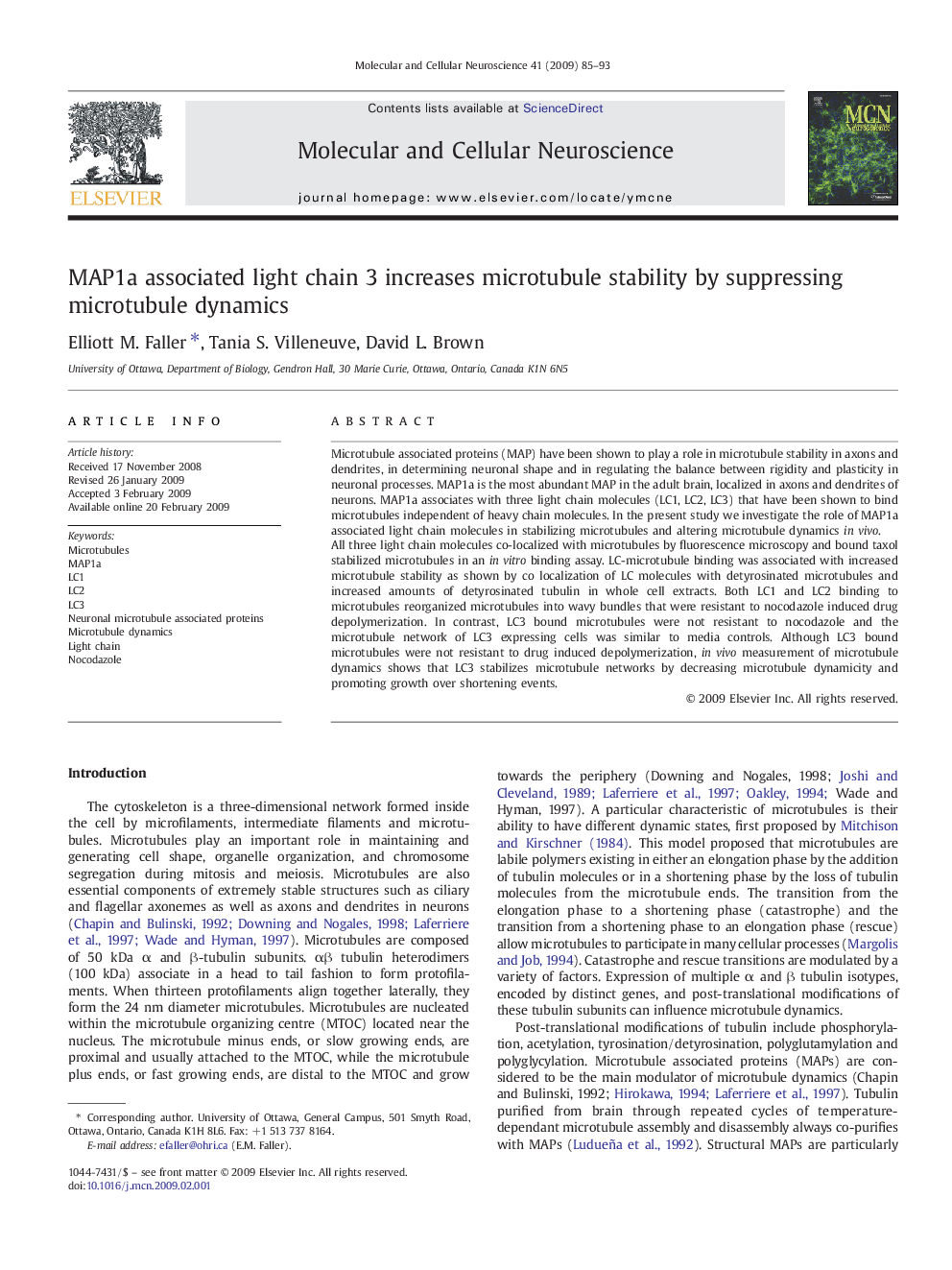| Article ID | Journal | Published Year | Pages | File Type |
|---|---|---|---|---|
| 2198819 | Molecular and Cellular Neuroscience | 2009 | 9 Pages |
Microtubule associated proteins (MAP) have been shown to play a role in microtubule stability in axons and dendrites, in determining neuronal shape and in regulating the balance between rigidity and plasticity in neuronal processes. MAP1a is the most abundant MAP in the adult brain, localized in axons and dendrites of neurons. MAP1a associates with three light chain molecules (LC1, LC2, LC3) that have been shown to bind microtubules independent of heavy chain molecules. In the present study we investigate the role of MAP1a associated light chain molecules in stabilizing microtubules and altering microtubule dynamics in vivo.All three light chain molecules co-localized with microtubules by fluorescence microscopy and bound taxol stabilized microtubules in an in vitro binding assay. LC-microtubule binding was associated with increased microtubule stability as shown by co localization of LC molecules with detyrosinated microtubules and increased amounts of detyrosinated tubulin in whole cell extracts. Both LC1 and LC2 binding to microtubules reorganized microtubules into wavy bundles that were resistant to nocodazole induced drug depolymerization. In contrast, LC3 bound microtubules were not resistant to nocodazole and the microtubule network of LC3 expressing cells was similar to media controls. Although LC3 bound microtubules were not resistant to drug induced depolymerization, in vivo measurement of microtubule dynamics shows that LC3 stabilizes microtubule networks by decreasing microtubule dynamicity and promoting growth over shortening events.
